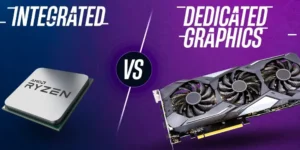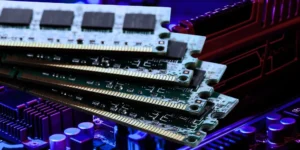Advanced Micro Devices (AMD) is a prominent and influential figure in the realm of technological innovation. Since its inception, AMD has been at the forefront of revolutionizing the hardware industry, from microprocessors to graphics cards. Founded in 1969 by Jerry Sanders and seven colleagues, its journey has been marked by resilience, ingenuity, and transformative contributions to computing and graphics technologies. This article delves into AMD’s remarkable evolution and profound impact as a hardware company, exploring its essential products, influence on diverse sectors, and role in shaping technology’s present and future.
The Genesis of Microprocessors
Its commitment to microprocessor development marked AMD’s early years. In the late 1970s, the company secured a licensing agreement with Intel, which laid the foundation for its entry into the world of microprocessors. The AMD Am386, released in 1991, marked the company’s first significant achievement in this domain. This 32-bit microprocessor democratized computing power, making it accessible to a broader audience and setting the stage for AMD’s future successes.
Rivaling the Industry Giant
A defining moment in AMD’s history was the introduction of the AMD K6 processor in 1997. This chip marked a turning point by establishing it as a formidable competitor to Intel in the microprocessor market. The K6’s performance and competitive pricing attracted attention, challenging Intel’s market dominance and encouraging healthy competition that ultimately benefited consumers.
Athlon and the 64-bit Revolution
AMD’s breakthrough came with the launch of the Athlon processor in 1999. This product showcased the company’s prowess in chip design and introduced 64-bit processing to mainstream computing. The Athlon 64 series, introduced in 2003, provided consumers with enhanced performance and paved the way for a new era in computing, with support for larger memory capacities and improved multimedia capabilities.
Graphics Revolution: Radeon Series
While AMD was making strides in the microprocessor space, it also had its eyes set on graphics. The Radeon series of graphics cards, introduced in the early 2000s, brought into direct competition with NVIDIA. These graphics cards were lauded for their performance, affordability, and innovative technologies. The Radeon series was crucial in advancing gaming experiences and enabling high-quality visual content creation.
APUs and Fusion
In a bold move that showcased AMD’s commitment to innovation, the company introduced Accelerated Processing Units (APUs) with the Fusion architecture. Combining CPU and GPU capabilities on a single chip, APUs aimed to enhance energy efficiency and graphics performance for various applications, from gaming to multimedia consumption. This approach departed from traditional processor design and reflected its forward-thinking approach.
Zen Architecture: Redefining Computing
AMD’s Zen architecture, introduced with the Ryzen processors, reinvigorated the microprocessor landscape. Ryzen processors, first released in 2017, delivered an exceptional multi-core performance at competitive prices, effectively challenging Intel’s dominance. The Zen architecture’s success was not limited to consumer desktops; it also extended to server environments with the EPYC line of processors, catering to data centers and enterprise needs.
Graphics and Compute Power: RDNA and CDNA
AMD unveiled the RDNA architecture in the graphics domain, powering its Radeon RX 5000 series graphics cards. This architecture emphasized efficiency and performance, catering to gamers and content creators. Additionally, its CDNA architecture was designed to address the demands of high-performance computing, machine learning, and data centers, showcasing the company’s versatility across multiple sectors.
Elevating Gaming with Ryzen and Radeon Integration
AMD’s acquisition of ATI Technologies in 2006 played a pivotal role in shaping its graphics and gaming strategy. This integration led to synergies between its CPUs and GPUs, culminating in technologies like Smart Access Memory and AMD Infinity Cache. These advancements demonstrated their commitment to offering seamless, integrated solutions that leverage the strengths of both processors and graphics cards.
Impacting Diverse Industries
AMD’s innovations have left an indelible mark on various industries, transforming their landscapes profoundly.
- Gaming: The Radeon and Ryzen integration, along with advancements like RDNA architecture, have elevated gaming experiences by delivering high-performance graphics and processors, making gaming more immersive and accessible.
- High-Performance Computing: AMD’s EPYC processors, based on the Zen architecture, have disrupted the data center landscape, offering exceptional performance and value for server and enterprise applications.
- Content Creation: Ryzen processors with multiple cores and threads have empowered content creators with faster rendering times and smoother multitasking, revolutionizing how creative professionals work.
- Scientific Research: AMD’s high-performance computing solutions, including CPUs and GPUs, have contributed to breakthroughs in scientific simulations, modeling, and data analysis.
Shaping the Future
AMD’s journey as a hardware company is characterized by its ability to challenge industry giants, innovate consistently, and impact diverse sectors. The company’s dedication to pushing technological boundaries continues with the Ryzen and EPYC processors based on the Zen 4 architecture and the RDNA 3 graphics architecture. These advancements promise to redefine computing and graphics performance, further cementing its position as a pioneer in the hardware landscape.
Conclusion
The evolution of Advanced Micro Devices from its beginnings as a microprocessor company to its current status as a leading force in computing and graphics technologies is a testament to its resilience, innovation, and commitment to progress. They have carved out a unique identity in the hardware industry through revolutionary products like the Athlon, Ryzen, and Radeon series. Its impact on gaming, high-performance computing, content creation, and scientific research is undeniable, and its pursuit of cutting-edge technologies will continue to shape the future of hardware innovation for years to come.















